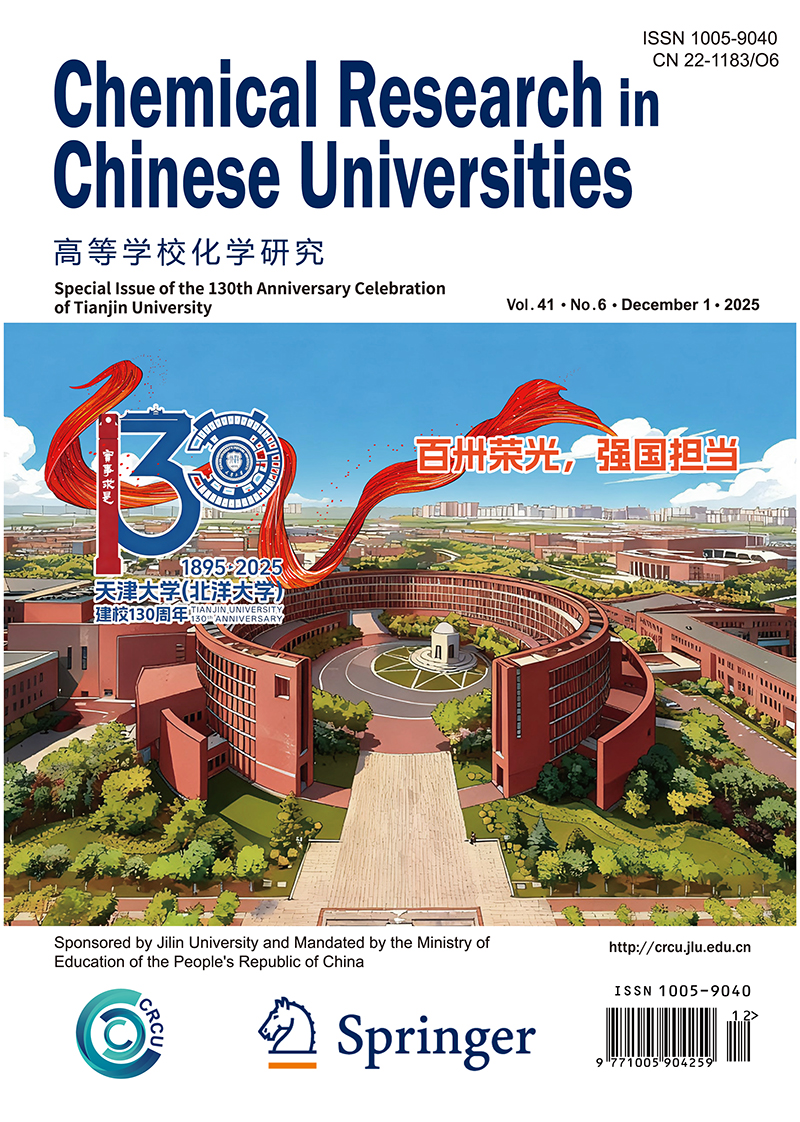Optimizing the π-Bridge of Non-fullerene Acceptors to Suppress Dark Current in NIR Organic Photodetectors
SHAO Lin, HUANG Yijun, HONG Ling, XU Zishuo, YANG Xiye, LIU Chunchen, HUANG Fei, CAO Yong
2024, 40(4):
712-721.
doi:10.1007/s40242-024-4103-8
 Abstract
(
)
References |
Related Articles |
Metrics
Abstract
(
)
References |
Related Articles |
Metrics
Recently, the rapid development of non-fullerene acceptors (NFAs) has laid the foundation for performance improvements in near-infrared (NIR) organic photodetectors (OPDs). However, reducing the bandgap of NFAs to achieve strong absorption in the shorter-wave region usually leads to increased dark current density (Jd) and decreased responsivity (R), severely limiting the detectivity (D*) of NIR-OPDs. To date, it remains challenging to manipulate the Jd of NIR-OPDs through rational structure engineering of NFAs. Herein, three NIR-NFAs, namely bis(2-decyltetradecyl)4,4′-(2′,7′-di- tert-butylspiro[cyclopenta[2,1-b:3,4-b′]dithiophene-4,9′-fluorene]- 2,6-diyl)bis(6-(((Z)-1-(dicyanomethylene)-5,6-difluoro-3-oxo-1,3- dihydro-2H-inden-2-ylidene)methyl)thieno[3,4-b]thiophene-2- carboxylate) (TSIC-4F), bis(2-decyltetradecyl)6,6′-(2′,7′-di-tert- butylspiro[cyclopenta[2,1-b:3,4-b′]dithiophene-4,9′-fluorene]-2,6- diyl)bis(4-(((Z)-1-(dicyanomethylene)-5,6-difluoro-3-oxo-1,3-dihydro- 2H-inden-2-ylidene)methyl)thieno[3,4-b]thiophene-2-carboxylate) (STIC-4F), and 2,2′-((2Z,2′Z)-(((2′,7′-di-tert-butylspiro[cyclopenta [2,1-b:3,4-b′]dithiophene-4,9′-fluorene]-2,6-diyl)bis(2,3-bis(5-(2- butyloctyl)thiophen-2-yl)thieno[3,4-b]pyrazine-7,5-diyl))bis(metha- neylylidene))bis(5,6-difluoro-3-oxo-2,3-dihydro-1H-indene-2,1- diylidene))dimalononitrile (TPIC-4F), were designed using the thieno[3,4-b]thiophene (TT) and thieno[3,4-b]pyrazine (TPy) derivatives as the π-bridge. Owing to the intramolecular S-S and S-N interactions, STIC-4F and TPIC-4F exhibited smaller backbone distortions than TSIC-4F. A significantly red-shifted absorption with a peak at 1015 nm was observed in TPIC-4F film, larger than that (ca. 960 nm) for TSIC-4F and STIC-4F films. Moreover, OPDs operating in a photovoltaic mode were successfully fabricated, and TPIC-4F-based OPDs achieved the lowest Jd of 3.18×10‒8 A/cm² at ‒0.1 V. Impressively, although TPIC-4F-based OPDs exhibited the lowest R, higher shot-noise-limited specific detectivity (Dsh*) in 1000—1200 nm could be achieved due to its lowest Jd. This study underscored the effectiveness of optimizing the π-bridge structure of NFAs to suppress Jd, ultimately attaining higher Dsh* in the NIR region.

